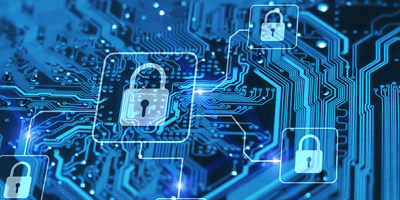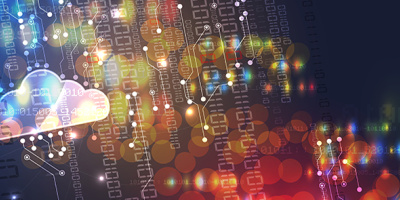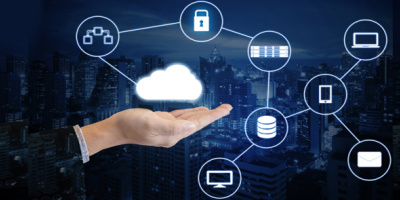What is primary storage?
Computer memory is prioritized according to how often that memory is required for use in carrying out operating functions. Primary storage is the means of containing primary memory (or main memory), which is the computer’s working memory and major operational component. The main or primary memory is also called “main storage” or “internal memory.” It holds relatively concise amounts of data, which the computer can access as it functions.
Because primary memory is so frequently accessed, it’s designed to achieve faster processing speeds than secondary storage systems. Primary storage achieves this performance boost by its physical location on the computer motherboard and its proximity to the central processing unit (CPU).
By having primary storage closer to the CPU, it’s easier to both read and write to primary storage, in addition to gaining quick access to the programs, data and instructions that are in current use and held within primary storage.
What is secondary storage?
External memory is also known as secondary memory and involves secondary storage devices that can store data in a persistent and ongoing manner. Because they can be used with an interruptible power supply, secondary storage devices are said to provide non-volatile storage.
These data storage devices can safeguard long-term data and establish operational permanence and a lasting record of existing procedures for archiving purposes. This makes them the perfect hosts for housing data backups, supporting disaster recovery efforts and maintaining the long-term storage and data protection of essential files.
How computer memory mimics human memory
To further understand the differences between primary storage and secondary storage, consider how human beings think. Each day, people are mentally bombarded by a startling amount of incoming data.
- Personal contacts: The average American makes or receives 6 phone calls per day, as well as sends or receives approximately 32 texts.
- Work data: In addition, most people are also engaged in work activities that involve incoming organizational data via any number of business directives or communiques.
- Advertising: It’s been estimated that the average person is exposed to as many as 10,000 advertisements or sponsored messages per day. Subtracting 8 hours for an average night’s sleep, that equates to a person being exposed to an advertising message every 5.76 seconds that they’re awake.
- News: The advertising figure does not include media-conveyed news information, which we’re receiving in an increasing number of formats. In many current television news programs, a single screen is being used to simultaneously transmit several types of information. For example, a news program might feature a video interview with a newsmaker while a scroll at the bottom of the screen announces breaking news headlines and a sidebar showcases latest stock market updates.
- Social media: Nor does that figure account for the growing and pervasive influence of social media. Through social media websites, messaging boards and online communities, people are absorbing even more data.
Clearly, this is a lot of incoming information to absorb and process. From the moment we awake until we return to sleep, our minds scan through all this possible data, making a near-endless series of minute judgments about what information to retain and what to ignore. In most instances, that decision comes down to utility. If the mind perceives that this information will need to be recalled again, that data is awarded a higher order of mental priority.
These prioritization decisions happen with such rapid frequency that our minds are trained to input this data without truly realizing it, leaving it to the human mind to sort out how primary and secondary memory is allocated. Fortunately, the human mind is quite adept at managing such multitasking, as are modern computers.
An apt analogy exists between how the human mind works and how computer memory is managed. In the mind, a person’s short-term memory is more dedicated to the most pressing and “current” cognitive needs. This might include data such as an access code used for personal banking, the scheduled time of an important medical appointment or the contact information of current business clients. In other words, it’s information of the highest anticipated priority. Similarly, primary storage is concerned with the computer’s most pressing processing needs.
Secondary data storage, on the other hand, offers long-term storage, like a person’s long-term memory. Secondary storage tends to operate with less frequency and can require more computer processing power to retrieve long-stored data. In this way, it mirrors the same retention and processing as long-term memory. Examples of long-term memory for a human could include a driver’s license number, long-retained facts or a spouse’s phone number.
Memory used in primary storage
Numerous forms of primary storage memory dominate any discussion of computer science:
- Random Access Memory (RAM): The most vitally important type of memory, RAM handles and houses numerous key processes, including system apps and processes the computer is currently managing. RAM also serves as a kind of launchpad for files or apps.
- Read-Only Memory (ROM): ROM allows viewing of contents but does not allow viewers to make changes to collected data. ROM is non-volatile storage because its data remains even when the computer is turned off.
- Cache memory: Another key form of data storage that stores data that is often retrieved and used. Cache memory contains less storage capacity than RAM but is faster than RAM.
- Registers: The fastest data access times of all are posted by registers, which exist within CPUs and store data to achieve the goal of immediate processing.
- Flash memory: Flash memory offers non-volatile storage that allows data to be written and saved (as well as be re-written and re-saved). Flash memory also enables speedy access times. Flash memory is used in smartphones, digital cameras, universal serial bus (USB) memory sticks and flash drives.
- Cloud storage: Cloud storage might operate as primary storage, in certain circumstances. For example, organizations hosting apps in their own data centers require some type of cloud service for storage purposes.
- Dynamic Random-Access Memory (DRAM): A type of RAM-based semiconductor memory, DRAM features a design that relegates each data bit to a memory cell that houses a tiny capacitor and transistor. DRAM is non-volatile memory thanks to a memory refresh circuit inside the DRAM capacitor. DRAM is most often used in creating a computer’s main memory.
- Static Random-Access Memory (SRAM): Another type of RAM-based semiconductor memory, SRAM’s architecture is based around a latching, flip-flop circuitry for data storage. SRAM is volatile storage that sacrifices its data when power is removed from the system. However, when it is operational, it provides faster processing than DRAM, which often drives SRAM’s price upward. SRAM is typically used within cache memory and registers.
Memory used in secondary storage
There are three forms of memory commonly used in secondary storage:
- Magnetic storage: Magnetic storage devices access data that’s written onto a spinning metal disk that contains magnetic fields.
- Optical storage: If a storage device uses a laser to read data off a metal or plastic disk that contains grooves (much like an audio LP), that’s considered optical storage.
- Solid state storage: Solid state storage (SSS) devices are powered by electronic circuits. Flash memory is commonly used in SSS devices, although some use random-access memory (RAM) with battery backup. SSS offers high-speed data transfer and high performance, although its financial costs when compared to magnetic storage and optical storage can prove prohibitive.
Types of primary storage devices
Storage resources are designated as primary storage according to their perceived utility and how that resource is used. Some observers incorrectly assume that primary storage depends upon the storage space of a particular storage medium, the amount of data contained within its storage capacity or its specific storage architecture. It’s actually not about how a storage medium might store information. It’s about the anticipated utility of that storage media.
Through this utility-based focus, it’s possible for primary storage devices to take multiple forms:
- Hard disk drives (HDDs)
- Flash-based solid-state drives (SSDs)
- Shared storage area network (SAN)
- Network attached storage (NAS)
Types of secondary storage devices
While some forms of secondary memory are internally based, there are also secondary storage devices that are external in nature. External storage devices (also called auxiliary storage devices) can be easily unplugged and used with other operating systems, and offer non-volatile storage:
- HDDs
- Floppy disks
- Magnetic tape drives
- Portable hard drives
- Flash-based solid-state drives
- Memory cards
- Flash drives
- USB drives
- DVDs
- CD-ROMs
- Blu-ray Discs
- CDs
Take the next step
Data is the lifeblood of any computer system. Primary storage and secondary storage are each involved in managing an ever-increasing flow of data but approach their tasks from different angles. Primary storage is about enabling computer operations by managing actively needed files. Secondary storage is concerned with permanently retaining data that’s considered important and worth saving, but which may not be immediately needed.
And now there’s a new element that must be factored into this data equation: security. With more frequent and evolving cyber threats, it’s essential to have data storage that contains built-in data protections. Find out how you can get the storage your organization needs, in addition to the security to keep precious data protected in an ongoing manner.






















 More than ever, there is a demand for IT to deliver innovation. Your IBM i has been an essential part of your business operations for years. However, your organization may struggle to maintain the current system and implement new projects. The thousands of customers we've worked with and surveyed state that expectations regarding the digital footprint and vision of the company are not aligned with the current IT environment.
More than ever, there is a demand for IT to deliver innovation. Your IBM i has been an essential part of your business operations for years. However, your organization may struggle to maintain the current system and implement new projects. The thousands of customers we've worked with and surveyed state that expectations regarding the digital footprint and vision of the company are not aligned with the current IT environment. TRY the one package that solves all your document design and printing challenges on all your platforms. Produce bar code labels, electronic forms, ad hoc reports, and RFID tags – without programming! MarkMagic is the only document design and print solution that combines report writing, WYSIWYG label and forms design, and conditional printing in one integrated product. Make sure your data survives when catastrophe hits. Request your trial now! Request Now.
TRY the one package that solves all your document design and printing challenges on all your platforms. Produce bar code labels, electronic forms, ad hoc reports, and RFID tags – without programming! MarkMagic is the only document design and print solution that combines report writing, WYSIWYG label and forms design, and conditional printing in one integrated product. Make sure your data survives when catastrophe hits. Request your trial now! Request Now. Forms of ransomware has been around for over 30 years, and with more and more organizations suffering attacks each year, it continues to endure. What has made ransomware such a durable threat and what is the best way to combat it? In order to prevent ransomware, organizations must first understand how it works.
Forms of ransomware has been around for over 30 years, and with more and more organizations suffering attacks each year, it continues to endure. What has made ransomware such a durable threat and what is the best way to combat it? In order to prevent ransomware, organizations must first understand how it works. Disaster protection is vital to every business. Yet, it often consists of patched together procedures that are prone to error. From automatic backups to data encryption to media management, Robot automates the routine (yet often complex) tasks of iSeries backup and recovery, saving you time and money and making the process safer and more reliable. Automate your backups with the Robot Backup and Recovery Solution. Key features include:
Disaster protection is vital to every business. Yet, it often consists of patched together procedures that are prone to error. From automatic backups to data encryption to media management, Robot automates the routine (yet often complex) tasks of iSeries backup and recovery, saving you time and money and making the process safer and more reliable. Automate your backups with the Robot Backup and Recovery Solution. Key features include: Business users want new applications now. Market and regulatory pressures require faster application updates and delivery into production. Your IBM i developers may be approaching retirement, and you see no sure way to fill their positions with experienced developers. In addition, you may be caught between maintaining your existing applications and the uncertainty of moving to something new.
Business users want new applications now. Market and regulatory pressures require faster application updates and delivery into production. Your IBM i developers may be approaching retirement, and you see no sure way to fill their positions with experienced developers. In addition, you may be caught between maintaining your existing applications and the uncertainty of moving to something new. IT managers hoping to find new IBM i talent are discovering that the pool of experienced RPG programmers and operators or administrators with intimate knowledge of the operating system and the applications that run on it is small. This begs the question: How will you manage the platform that supports such a big part of your business? This guide offers strategies and software suggestions to help you plan IT staffing and resources and smooth the transition after your AS/400 talent retires. Read on to learn:
IT managers hoping to find new IBM i talent are discovering that the pool of experienced RPG programmers and operators or administrators with intimate knowledge of the operating system and the applications that run on it is small. This begs the question: How will you manage the platform that supports such a big part of your business? This guide offers strategies and software suggestions to help you plan IT staffing and resources and smooth the transition after your AS/400 talent retires. Read on to learn:
LATEST COMMENTS
MC Press Online